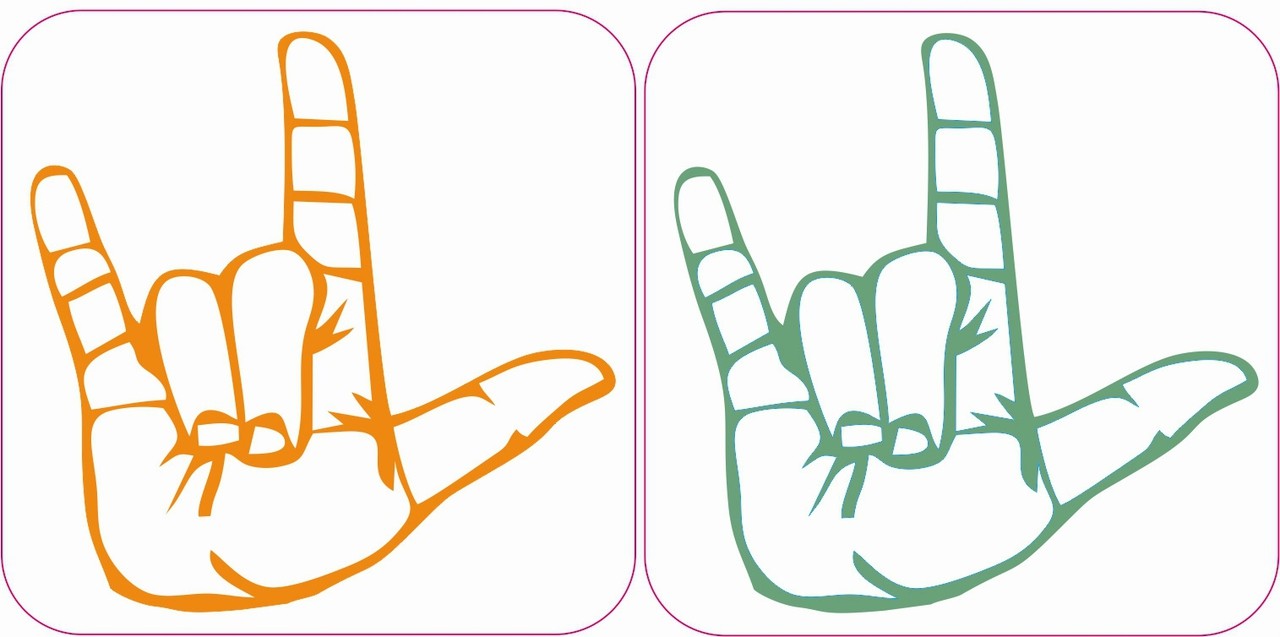
Parents are often the source of a child’s early acquisition of language, but for children who are deaf, additional people may be models for language acquisition. Fingerspelling is often used for proper names or to indicate the English word for something. In the fingerspelled alphabet, each letter corresponds to a distinct handshape. Other sociological factors, including age and gender, can affect ASL usage and contribute to its variety, just as with spoken languages.įingerspelling is part of ASL and is used to spell out English words. In addition to individual differences in expression, ASL has regional accents and dialects just as certain English words are spoken differently in different parts of the country, ASL has regional variations in the rhythm of signing, pronunciation, slang, and signs used. Just as with other languages, specific ways of expressing ideas in ASL vary as much as ASL users themselves. For example, English speakers may ask a question by raising the pitch of their voices and by adjusting word order ASL users ask a question by raising their eyebrows, widening their eyes, and tilting their bodies forward. While every language has ways of signaling different functions, such as asking a question rather than making a statement, languages differ in how this is done. It contains all the fundamental features of language, with its own rules for pronunciation, word formation, and word order. How does ASL compare with spoken language?ĪSL is a language completely separate and distinct from English. While they still contain some similar signs, they can no longer be understood by each other’s users. Modern ASL and modern LSF are distinct languages.
#I LOVE YOU IN SIGN LANGUAGE PLUS#
Today’s ASL includes some elements of LSF plus the original local sign languages over time, these have melded and changed into a rich, complex, and mature language. The exact beginnings of ASL are not clear, but some suggest that it arose more than 200 years ago from the intermixing of local sign languages and French Sign Language (LSF, or Langue des Signes Française). Some countries adopt features of ASL in their sign languages. For example, British Sign Language (BSL) is a different language from ASL, and Americans who know ASL may not understand BSL. Different sign languages are used in different countries or regions. Is sign language the same in other countries? It is the primary language of many North Americans who are deaf and hard of hearing and is used by some hearing people as well. ASL is expressed by movements of the hands and face. Congressional Testimony and the NIDCD BudgetĪ young boy signs "I love you." What is American Sign Language?Īmerican Sign Language (ASL) is a complete, natural language that has the same linguistic properties as spoken languages, with grammar that differs from English.Research Training in NIDCD Laboratories (Intramural).Institutional Research Training Programs.Types of Research Training Funding Opportunities.About NIDCD's Research Training Program.Scientific Workshop and Meeting Reports.Building a Diverse Scientific Workforce.The makers of Spider-Man intended this to be a humorous reference to the sign's actual meaning.

This sign has been popularized by the comic book character Spider-Man, who uses the gesture to activate a button on his palm to fire his signature web attacks.
#I LOVE YOU IN SIGN LANGUAGE PROFESSIONAL#
Popular 80s professional wrestler Jimmy "Superfly" Snuka would frequently flash the ILY sign with both hands during his matches and interviews, including while standing on the top rope before delivering his finishing move "Superfly Splash". Presidential candidate Jimmy Carter reportedly picked it up from a group of Deaf supporters in the Midwest and, in 1977, during his Inauguration Day parade, flashed the ILY to a group of Deaf people on the sidewalk. The sign received significant media exposure with Richard Dawson's use of the ILY in his signoff from each episode of the Family Feud, which he hosted from 1976 to 1985. However, resident students of deaf schools from the early 20th century do not recall seeing the sign anywhere until the 1970s. The sign is an informal expression of any of several positive feelings, ranging from general esteem to love, for the recipient of the sign.ĭeaf Heritage dates the origin of the ILY to 1905. Seen primarily in the United States and other Americanized countries, the sign originated among deaf school children using American Sign Language to create a sign from a combination of the signs for the letters I, L and Y (I Love You). I LOVE YOU (SIGN LANGUAGE) - The ILY is a sign from American Sign Language which, as a gesture, has moved into the mainstream.


 0 kommentar(er)
0 kommentar(er)
